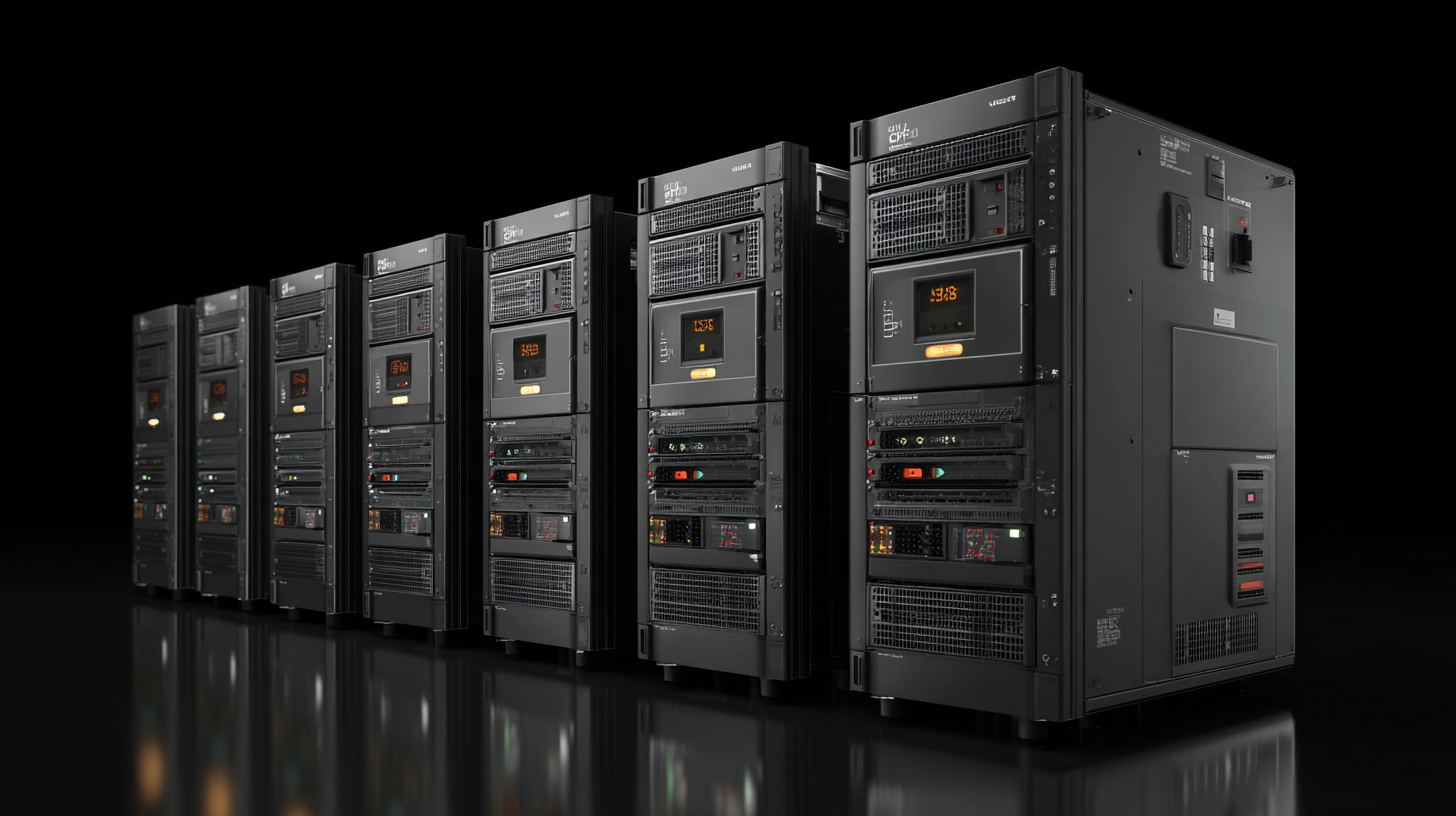Blog
Innovative Examples of the Best Ups Power Supply Solutions for Reliable Performance
In today's fast-paced digital landscape, the reliability of power supply systems is more crucial than ever, making UPS power supply solutions indispensable for businesses and individuals alike. As the world leans increasingly on technology, the demand for uninterrupted power sources grows, leading to innovative advancements in the field. This blog explores various innovative examples of UPS power supply solutions, showcasing how China's manufacturing prowess is meeting global needs with high-quality products that ensure dependable performance.

With a focus on exceptional reliability and advanced technology, we will delve into the features that set these UPS systems apart, emphasizing their universal appeal and the assurance of quality in a competitive market. Join us as we uncover the best UPS power supply solutions that not only promise reliability but also highlight the strength of "Made in China" products on the world stage.
Comparison of Top UPS Technologies: Line-Interactive vs. Online UPS Systems
When choosing a UPS (Uninterruptible Power Supply) system, understanding the differences between line-interactive and online UPS technologies is crucial for reliable performance.
Line-interactive UPS units are designed to provide voltage regulation using an automatic voltage regulator (AVR) to correct minor fluctuations in power. They are particularly efficient for environments where outages are infrequent but voltage sags or surges are common. This design allows them to maintain a stable output without excessively draining the battery, ensuring that the system remains operational during brief interruptions while conserving battery life for prolonged outages.
On the other hand, online UPS systems offer a higher level of protection by converting incoming AC power to DC and then back to AC, providing a continuous and clean power supply. This double-conversion process eliminates any power disturbances, making online UPSs ideal for sensitive equipment that requires a consistent and stable power source. They are particularly beneficial in critical environments like data centers, where any slight deviation in power quality can harm sensitive hardware.
Choosing between line-interactive and online UPS systems ultimately depends on the specific needs of your environment, including the level of power reliability required and the potential for disruptions.
Evaluating Sizing Requirements: Key Factors for Choosing the Right UPS Solution
When selecting an uninterruptible power supply (UPS) solution, understanding the sizing requirements is crucial to ensuring reliable performance. Key factors must be considered to determine the appropriate UPS capacity for your specific needs. One of the primary elements is the total power consumption of the connected equipment. This involves calculating the wattage and ensuring that the UPS can handle both the typical load and any potential peak demands without overwhelming its capacity.

Additionally, evaluating the runtime needs is essential. Depending on the criticality of the systems being protected, you may require a UPS that can sustain power for an extended duration during outages. This necessitates analyzing how long you need to keep your systems operational and matching that with the UPS's battery capacity.
Other aspects to consider include the environmental conditions where the UPS will be used, as temperature and humidity can affect its performance and lifespan. By carefully assessing these factors, you can select a UPS solution that not only meets your requirements but also offers peace of mind in terms of reliable power supply during unforeseen interruptions.
Cost Efficiency Analysis: Initial Investment Versus Long-Term Savings in UPS Systems
When considering Uninterruptible Power Supply (UPS) systems, businesses must assess the balance between initial investment and long-term savings. While high-quality UPS solutions may come with a steep price tag, their reliability and efficiency can lead to significant savings in the long run. For example, an efficient UPS can reduce energy consumption and lower electricity costs, ultimately offsetting the initial expenditure over time.
Tips for choosing the right UPS include evaluating energy efficiency ratings and selecting models that provide advanced features, such as power monitoring and load management. These features not only help protect sensitive equipment but also streamline energy usage, contributing to overall cost savings.
Additionally, consider the potential for reduced downtime and maintenance costs. A well-designed UPS solution minimizes interruptions, which can be costly in terms of lost productivity. Investing in high-quality power supply solutions ensures that your operations run smoothly, allowing businesses to allocate funds more effectively and enjoy a healthier bottom line.
Understanding Load Capacity: UPS Ratings and Their Impact on Performance Reliability
When considering the reliability of Uninterruptible Power Supplies (UPS), understanding load capacity and UPS ratings is crucial for ensuring optimal performance. UPS systems come with varying capacities, often measured in Volt-Amperes (VA). This rating indicates the maximum load the UPS can handle, which directly impacts how long it can sustain power during an outage. For effective use, select a UPS that exceeds your total equipment load to avoid overloading and ensure seamless operation during power interruptions.
**Tips for Selecting the Right UPS:**
1. **Calculate Your Load**: Before purchasing a UPS, sum up the VA ratings of the devices you intend to connect. This will help you choose a UPS with adequate capacity.
2. **Consider Runtime Needs**: Different applications require different runtimes. Determine how long you need your devices to stay powered during an outage, and select a UPS that meets those requirements.
3. **Look for Advanced Features**: Features like surge protection and battery management can enhance reliability and performance. Opt for models that offer smart technologies to monitor load and improve battery longevity.
With the right UPS, you can enjoy unwavering performance across various applications, from gaming setups to essential home devices, safeguarding against unexpected power disruptions.
Innovative UPS Power Supply Solutions Performance Reliability
This chart presents key performance metrics of innovative UPS power supply solutions. The metrics include Load Capacity in Volt-Amps (VA), Runtime in minutes, and Efficiency expressed as a percentage. Understanding these metrics is essential for assessing UPS reliability and performance.
Maintenance and Support: Selecting UPS Solutions with Optimal Lifespan and Service Packages
When selecting an uninterruptible power supply (UPS) solution, it's essential to prioritize longevity and comprehensive service packages. A UPS system is a critical component for maintaining power during outages, and its lifespan can significantly impact operational efficiency. To ensure you choose a UPS that meets your needs, look for models designed with durable components and robust cooling systems, which can extend their operational life. Moreover, understanding the expected lifespan of various UPS technologies—such as lithium-ion versus traditional lead-acid batteries—can help you make informed decisions.
In addition to lifespan, consider the maintenance and support services offered with UPS solutions. A reliable service package can be invaluable, providing timely support and regular maintenance checks to prevent potential downtimes. Look for providers that offer proactive monitoring, allowing for early detection of issues before they escalate. Some UPS manufacturers also provide extended warranties and service plans that ensure parts are replaced as needed without incurring heavy costs. This combination of durability and strong support services not only assures you of a reliable power supply but also enhances the overall value of your investment.

